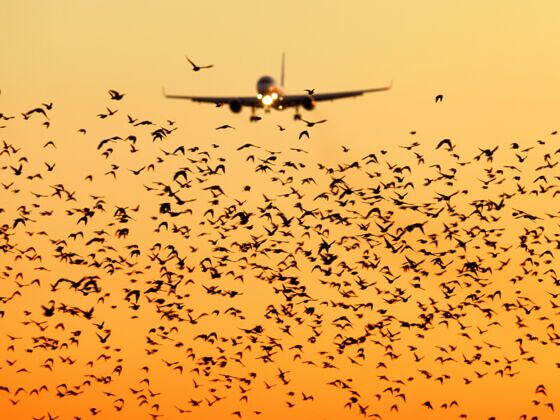Of all the things that could cause something to go wrong during a flight, you might not think that a bird strike would be high on the list. After all, airplanes are made of millions of parts, including some very sophisticated electronics, that could potentially malfunction and create issues. Yet a simple bird colliding with a plane can lead to complications.
One extreme and famous example of a bird strike with severe consequences is the January 2009 US Airways Flight 1549 which hit a flock of Canada geese after taking off from LaGuardia airport. The plane lost all engine power and had to make an emergency landing on New York City’s Hudson River.
We talked with Tyler Herbert, an airline pilot in Canada, to get an expert’s answer to our most pressing questions about bird strikes. Herbert has been a commercial pilot for 13 years, flying several different types of aircraft including the King Air 200, Dash 8, Q400, 787, and the 777. You can follow his flying adventures on Instagram at therb777.
This interview has been edited for length and clarity.
